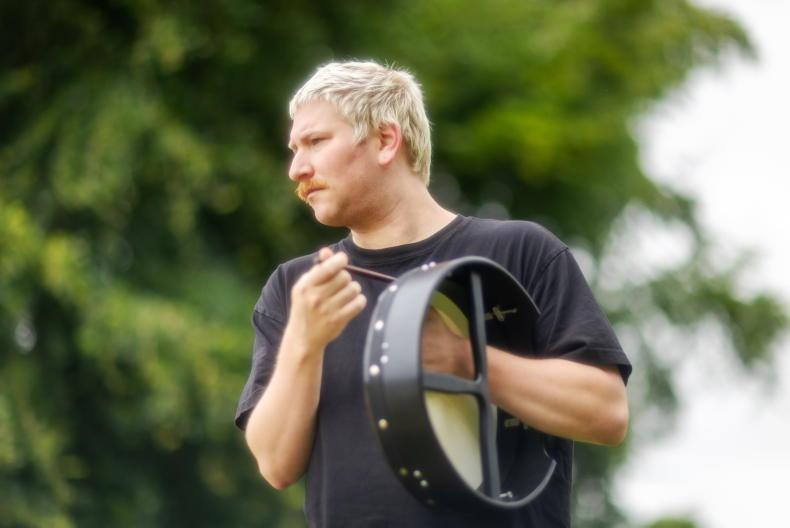There is a problem with the opening line of the Wexford anthem, Boolavogue. If the sun is, “setting over the bright May meadows of Shelmalier” – it is setting in the east. Not that you would notice. The song is the undisputed champion of sad rebel songs, ushered into existence in three stages.
Origin story
The song was written by PJ McCall, a writer-publican who also found time in the 1880s and 1890s to edit Old Moore’s Almanack and the Farmer’s Almanack, listing the times of tides and sunsets. It was first published in the Irish Weekly Independent on 18 June 1898.
Around 1909, ballad singer Gerald Crofts changed the tune to the rousing crescendo familiar today, and in 1921, Father Padraig Breathnach ensured it became a hit when he included it in his hugely influential publication, Songs of the Gael.
The song completed the rehabilitation of John Murphy, a leader that had been disowned by the catholic church. Murphy had studied in Seville (as had his bishop) and returned to his native county in the summer of 1785. He initially followed the bishop’s instructions to declare his loyalty to the Dublin Castle regime, but parishioners who
surrendered their arms were fired on, and, when his thatched chapel was burned, he changed his mind and transformed himself into a highly effective rebel leader.
Wexford’s late folk historian, Nicky Furlong, confirmed that the ballad stayed reasonably faithful to the chronology of events during 1798, allowing for rhyming and a little poetic license where the capture, torture and execution in Tullow were condensed into a graphic and devastating line: “burned his body upon a rack.”
Colm Ó Lochlainn, the author of one of the best-known song books, Irish Street Ballads, noted that, for a Dublin publican, McCall’s songs were, “close to the heart of rural Ireland.” With good reason. McCall’s maternal uncle fashioned pikes for the 1798 rebels. Biographers point out that one of his most famous songs, Follow Me Up To Carlow, is based in his father’s home county and two others, Kelly, The Boy From Killanne and Boolavogue are based in his mother’s.
At the time the ballad was published, the catholic church had spent decades attempting to distance itself from the 1798 rebellion. Mainstream catholic historians, such as WJ Fitzpatrick, followed the colonial line that the 1798 rebellion was a hopeless misadventure, as was Emmet’s replay in 1803. It was doomed by poor leadership and enjoined by a drunken rabble of stage Irish ruffians. Two verses of The Boys Of Wexford, written 38 years before Boolavogue, follow this narrative.
Modern historians have unearthed an alternative story: a movement based on enlightened democratic aspirations and a series of complex and well-planned military operations, which came much closer to success than their opponents were willing to admit.
But while winners write the history, losers write the songs. Father Murphy was the subject of three early ballads from which McCall drew his version. Folklorist and ballad collector PW Joyce, whose brother wrote The Boys Of Wexford, mistook McCall’s version for the original.
Boolavogue beginnings
Enter Gerald Crofts, another great Dublin ballad singer with a vast repertoire. He changed the tune from McCall’s original about 1909 to Youghal Harbour, a tune cited by Christopher Mayhew in 1850 in his book, The London Poor, as one of the most popular used by Irish ballad-hawkers in London.
Padraig Breathnach from Carrick-on-Suir, (Father Patrick Walsh), published dozens of penny songsters from 1902, culminating in a four-part series Songs of the Gael. Part four included what he called, “a Co Wexford version” of Boolavogue, “obtained from the Rev P Cummins, Enniscorthy and written down by Chevalier Grattan-Flood.”
Since then, Boolavogue has been (pause for effect), in vogue. Its power to inspire is unrivalled. Ronan Tynan, a member of the Irish tenors, said in his biography that, of all the songs on the concert playlist, it always got the biggest reaction among audiences.
In May 2023, when Wexford’s status as a premier hurling county was under threat and they needed to beat Kilkenny, the throw in was delayed as every verse was sung with gusto by the assembled supporters. “More verses than American Pie,” sighed one of the visiting sports reporters.
Wexford won in a goal frenzy, saving their status. The heather blazing, indeed.
Extract from Boolavogue:
At Boolavogue as the sun was setting
O’er the bright, May meadows of Shelmalier,
A rebel hand set the heather blazing
And brought the neighbours from far and near
Then Father Murphy from old Kilcormac
Rang out the rocks with a warning cry
“Arm, arm,” he cried,
“For I’ve come to lead you,
For Ireland’s freedom we’ll fight or die.”
Read more
Balladeer: how did Molly end up as a folk anthem for Dublin?
The Rose of Moocoin: an inconveniently located anthem
There is a problem with the opening line of the Wexford anthem, Boolavogue. If the sun is, “setting over the bright May meadows of Shelmalier” – it is setting in the east. Not that you would notice. The song is the undisputed champion of sad rebel songs, ushered into existence in three stages.
Origin story
The song was written by PJ McCall, a writer-publican who also found time in the 1880s and 1890s to edit Old Moore’s Almanack and the Farmer’s Almanack, listing the times of tides and sunsets. It was first published in the Irish Weekly Independent on 18 June 1898.
Around 1909, ballad singer Gerald Crofts changed the tune to the rousing crescendo familiar today, and in 1921, Father Padraig Breathnach ensured it became a hit when he included it in his hugely influential publication, Songs of the Gael.
The song completed the rehabilitation of John Murphy, a leader that had been disowned by the catholic church. Murphy had studied in Seville (as had his bishop) and returned to his native county in the summer of 1785. He initially followed the bishop’s instructions to declare his loyalty to the Dublin Castle regime, but parishioners who
surrendered their arms were fired on, and, when his thatched chapel was burned, he changed his mind and transformed himself into a highly effective rebel leader.
Wexford’s late folk historian, Nicky Furlong, confirmed that the ballad stayed reasonably faithful to the chronology of events during 1798, allowing for rhyming and a little poetic license where the capture, torture and execution in Tullow were condensed into a graphic and devastating line: “burned his body upon a rack.”
Colm Ó Lochlainn, the author of one of the best-known song books, Irish Street Ballads, noted that, for a Dublin publican, McCall’s songs were, “close to the heart of rural Ireland.” With good reason. McCall’s maternal uncle fashioned pikes for the 1798 rebels. Biographers point out that one of his most famous songs, Follow Me Up To Carlow, is based in his father’s home county and two others, Kelly, The Boy From Killanne and Boolavogue are based in his mother’s.
At the time the ballad was published, the catholic church had spent decades attempting to distance itself from the 1798 rebellion. Mainstream catholic historians, such as WJ Fitzpatrick, followed the colonial line that the 1798 rebellion was a hopeless misadventure, as was Emmet’s replay in 1803. It was doomed by poor leadership and enjoined by a drunken rabble of stage Irish ruffians. Two verses of The Boys Of Wexford, written 38 years before Boolavogue, follow this narrative.
Modern historians have unearthed an alternative story: a movement based on enlightened democratic aspirations and a series of complex and well-planned military operations, which came much closer to success than their opponents were willing to admit.
But while winners write the history, losers write the songs. Father Murphy was the subject of three early ballads from which McCall drew his version. Folklorist and ballad collector PW Joyce, whose brother wrote The Boys Of Wexford, mistook McCall’s version for the original.
Boolavogue beginnings
Enter Gerald Crofts, another great Dublin ballad singer with a vast repertoire. He changed the tune from McCall’s original about 1909 to Youghal Harbour, a tune cited by Christopher Mayhew in 1850 in his book, The London Poor, as one of the most popular used by Irish ballad-hawkers in London.
Padraig Breathnach from Carrick-on-Suir, (Father Patrick Walsh), published dozens of penny songsters from 1902, culminating in a four-part series Songs of the Gael. Part four included what he called, “a Co Wexford version” of Boolavogue, “obtained from the Rev P Cummins, Enniscorthy and written down by Chevalier Grattan-Flood.”
Since then, Boolavogue has been (pause for effect), in vogue. Its power to inspire is unrivalled. Ronan Tynan, a member of the Irish tenors, said in his biography that, of all the songs on the concert playlist, it always got the biggest reaction among audiences.
In May 2023, when Wexford’s status as a premier hurling county was under threat and they needed to beat Kilkenny, the throw in was delayed as every verse was sung with gusto by the assembled supporters. “More verses than American Pie,” sighed one of the visiting sports reporters.
Wexford won in a goal frenzy, saving their status. The heather blazing, indeed.
Extract from Boolavogue:
At Boolavogue as the sun was setting
O’er the bright, May meadows of Shelmalier,
A rebel hand set the heather blazing
And brought the neighbours from far and near
Then Father Murphy from old Kilcormac
Rang out the rocks with a warning cry
“Arm, arm,” he cried,
“For I’ve come to lead you,
For Ireland’s freedom we’ll fight or die.”
Read more
Balladeer: how did Molly end up as a folk anthem for Dublin?
The Rose of Moocoin: an inconveniently located anthem








SHARING OPTIONS